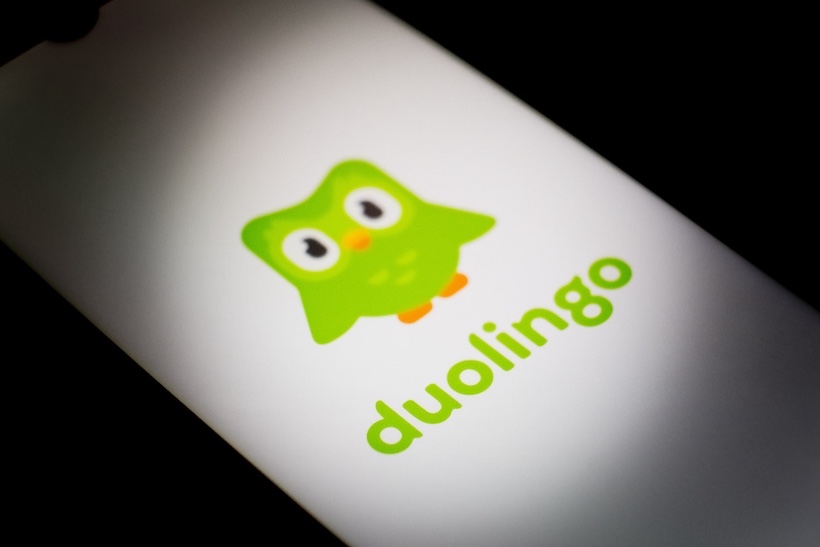Duolingo's Transition: From Contract Workers To AI

Table of Contents
The Role of Contract Workers in Duolingo's Early Success
In its early stages, Duolingo heavily relied on contract workers to build its extensive language courses. These individuals played a vital role in:
- Content Creation: Developing lessons, exercises, and stories.
- Translation: Ensuring accuracy and cultural relevance across different languages.
- Quality Assurance: Reviewing and improving the quality of existing content.
Utilizing contract workers offered several key advantages:
- Cost-Effectiveness: It was initially more economical than building a large in-house team.
- Access to Diverse Linguistic Expertise: Duolingo could tap into a global pool of talented linguists and native speakers.
However, this approach wasn't without its challenges:
- Inconsistent Quality: Maintaining consistent quality across a large and distributed workforce proved difficult.
- Communication Challenges: Coordinating and managing a large number of remote contractors presented logistical hurdles.
- Management Overhead: The administrative burden of managing contracts, payments, and communication was significant.
The Rise of AI in Duolingo's Platform
Duolingo's increasing integration of AI is transforming the user experience. AI is now powering several key aspects of the platform:
Personalized Learning Paths
AI analyzes user performance, identifying strengths and weaknesses to tailor lessons and exercises. This personalized approach optimizes learning efficiency and keeps users engaged.
AI-Driven Content Creation
Duolingo is leveraging AI to generate new exercises and lessons, significantly accelerating content development. This allows for faster expansion into new languages and the creation of more diverse learning materials.
Enhanced Feedback Mechanisms
AI-powered feedback provides more accurate and immediate responses to user answers, improving learning accuracy and comprehension.
Chatbots and Conversational AI
AI-powered chatbots offer interactive practice opportunities, allowing users to engage in realistic conversations and improve their conversational fluency.
Specific examples of AI features include:
- Personalized lesson sequencing based on user progress.
- AI-generated vocabulary quizzes tailored to individual learning styles.
- Automated feedback on pronunciation using speech recognition.
- AI-powered chatbots for conversational practice.
Cost Savings and Efficiency Gains through AI
The shift towards AI offers substantial cost savings and efficiency improvements for Duolingo. By automating tasks previously handled by contract workers, Duolingo can:
- Reduce labor costs associated with content creation, translation, and quality assurance.
- Scale its operations more efficiently, expanding into new languages and markets more rapidly.
- Improve the consistency and quality of its content through automated processes.
Examples of quantifiable benefits could include:
- A significant reduction in the cost per lesson created.
- A faster turnaround time for new language course releases.
- Improved user engagement metrics due to personalized learning experiences.
Ethical Considerations and the Future of Language Learning with AI
While the transition to AI offers numerous benefits, it also raises important ethical considerations:
- AI Bias: AI algorithms trained on biased data may perpetuate existing societal biases in language learning materials.
- Data Privacy: The collection and use of user data for AI personalization must be transparent and comply with privacy regulations.
- Over-reliance on Technology: Maintaining a balance between AI-driven learning and human interaction is crucial for effective language acquisition.
Duolingo, and the broader language-learning industry, must address these issues through:
- Careful curation of training data to mitigate AI bias.
- Robust data privacy protocols to protect user information.
- A commitment to incorporating human oversight and quality control in the AI-driven learning process.
Conclusion: The Future of Duolingo and AI's Role in Language Acquisition
Duolingo's transition from contract workers to AI marks a pivotal moment in the evolution of language learning platforms. The integration of AI has led to personalized learning experiences, increased efficiency, and significant cost savings. However, addressing ethical considerations and maintaining a balance between technology and human interaction remain crucial. Experience the future of language learning with Duolingo and see how AI is revolutionizing the way we learn new languages. Explore Duolingo's innovative use of AI to personalize your language learning journey and discover how this powerful technology can help you achieve your language learning goals.

Featured Posts
-
 Cleveland Guardians Beat New York Yankees 3 2 Bibees Strong Showing After Early Blow
May 01, 2025
Cleveland Guardians Beat New York Yankees 3 2 Bibees Strong Showing After Early Blow
May 01, 2025 -
 Six Nations 2024 Frances Triumph Englands Dominance And Disappointments For Scotland And Ireland
May 01, 2025
Six Nations 2024 Frances Triumph Englands Dominance And Disappointments For Scotland And Ireland
May 01, 2025 -
 Kampen Start Kort Geding Tegen Enexis Over Stroomnet
May 01, 2025
Kampen Start Kort Geding Tegen Enexis Over Stroomnet
May 01, 2025 -
 Frances Rugby Triumph Duponts Masterful Performance Against Italy
May 01, 2025
Frances Rugby Triumph Duponts Masterful Performance Against Italy
May 01, 2025 -
 Tfasyl Alhkm Dd Ryys Shbab Bn Jryr
May 01, 2025
Tfasyl Alhkm Dd Ryys Shbab Bn Jryr
May 01, 2025
Latest Posts
-
 Hl Tshkl Arqam Jwanka Thdyda Hqyqya Lnady Alnsr
May 01, 2025
Hl Tshkl Arqam Jwanka Thdyda Hqyqya Lnady Alnsr
May 01, 2025 -
 Miedzynarodowy Dzien Zwierzat Bezdomnych 4 Kwietnia Pomoz Zwierzetom
May 01, 2025
Miedzynarodowy Dzien Zwierzat Bezdomnych 4 Kwietnia Pomoz Zwierzetom
May 01, 2025 -
 Garcias Blast Witts Double Royals Edge Guardians In 4 3 Victory
May 01, 2025
Garcias Blast Witts Double Royals Edge Guardians In 4 3 Victory
May 01, 2025 -
 Arqam Jwanka Almthyrt Llqlq Fy Nady Alnsr Altfasyl Alkamlt
May 01, 2025
Arqam Jwanka Almthyrt Llqlq Fy Nady Alnsr Altfasyl Alkamlt
May 01, 2025 -
 Bibees Resilience Guardians Defeat Yankees In Close Contest
May 01, 2025
Bibees Resilience Guardians Defeat Yankees In Close Contest
May 01, 2025
